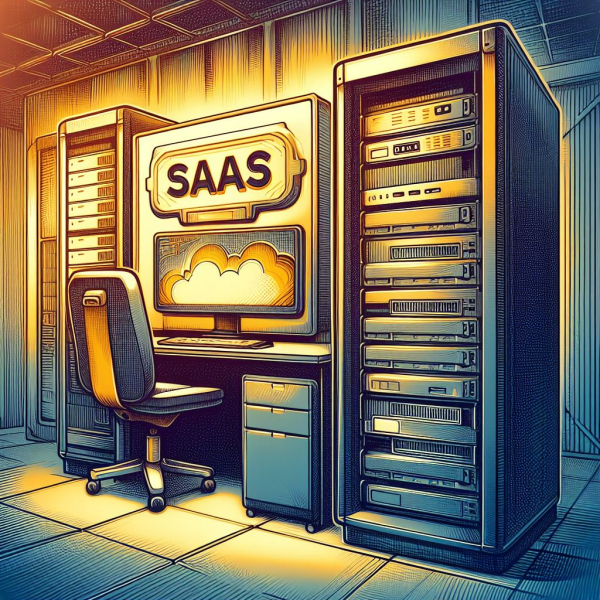The world of software-as-a-service (SaaS) is expanding rapidly, many services promise productive workflow using Saas.With the convenience and cost-effectiveness of SaaS, it has become an indispensable tool. However, the abundance of SaaS solutions also brings chaos from managing multiple subscriptions across platforms. This results in inefficiencies, confusion, increased costs and vulnerabilities. In this article, I chronicle my personal journey of accumulating over 100 SaaS subscriptions, the ensuing chaos and how I eventually streamlined my stack after strategic interventions.
The Slippery Slope of Tempting SaaS Deals
My journey with SaaS tools started off modestly many years ago when I signed up for essential services like web hosting, cloud storage and social media scheduling to manage my personal projects. However, over the years, I got exposed to various SaaS deal platforms like Appsumo, SaaS Mantra and aggregator Facebook groups that offered exclusive lifetime access to software products. The thrill of grabbing good deals on cutting-edge tools was too tempting. During events like Black Friday, I would purchase even more subscriptions, excited by the discounts even if I did not have an immediate need. Before realizing, I had over 100 active SaaS subscriptions!
Hindi Summary
ब्लॉग पोस्ट, “SaaS को नेविगेट करना: कई सदस्यताओं का प्रबंधन कैसे करें” में, लेखक एकाधिक SaaS सदस्यताओं का प्रबंधन करने की चुनौतियों का अन्वेषण करते हैं। यह लेख उन तरीकों पर प्रकाश डालता है जिनसे व्यवसाय अधिक संख्या में SaaS उपकरणों को प्रभावी रूप से प्रबंधित करके अपने संचालन को बेहतर बना सकते हैं। इसमें SaaS सौदों की आकर्षण, एकाधिक सदस्यताओं की पिटफॉल्स, SaaS की अराजकता को कम करने की रणनीतियां, SaaS प्रबंधन में AI की भूमिका, सक्रिय SaaS सेवाओं के साथ वर्कफ्लो को स्ट्रीमलाइन करना, और सचेत सदस्यता प्रबंधन के साथ आगे का पथ चर्चा किया गया है।

Computer server with a software as a service or SaaS on computer terminal
Downside: SaaS Subscription Chaos
The abundance of tools sounded great initially. However, tracking the login credentials, features, billing cycles and documentation of over 100 platforms was a logistical nightmare. I had many overlapping functionalities, leading to confusion over which tool to use for what. As months passed, my monthly SaaS expenses spiralled out of control despite low utilization as I was paying for unused or redundant subscriptions. Relying on so many vendors also increased vulnerabilities. Overall, it was impossible to optimize value while my productivity took a hit managing this chaos.
The Rabbit Hole of Lifetime SaaS Deals
In my quest to access the latest tools, I often got lured by “lifetime deal” offers promising one-time access for life. But in my excitement, I purchased deals for tools I did not really need, further adding to my subscription chaos!
Steps to Resolution: Productive Workflow Using SaaS
I decided to take control when I saw my costs exceed $1000 per month despite low utilization of the tools. The first step was auditing my active subscriptions and categorizing them to identify redundant tools. I cancelled unused services which helped me save money as well. Next, I consolidated overlapping functionalities into all-in-one platforms like HubSpot and Zapier. I also implemented an SSO solution to organize the many logins. Setting up automations between complementary tools aligned my workflows. After months of effort, I successfully reduced my 100+ subscriptions to less than 20 best-of-breed SaaS services!
Leveraging AI to Optimize SaaS Usage
The rapid advancement of AI has been a game changer in helping organize SaaS chaos. With abilities like data analysis, task automation and predictive intelligence, AI-based SaaS solutions can streamline processes, boost efficiency and deliver personalized user experiences. I have now incorporated AI-powered tools to manage subscriptions, invoices, credentials and track SaaS utilization. This has helped create order amidst the chaos.
My New Streamlined SaaS Workflow
By leveraging cutting-edge SaaS solutions, I have been able to transform my workflow to boost productivity. With cloud accessibility, I can work from anywhere. Tools like Trello, Asana, Dropbox, Slack and Zoom offer seamless collaboration. Customer relationship management (CRM) and marketing automation platforms provide real-time insights to act on. By harnessing the power of SaaS, I have been able to adapt faster to changing demands and accelerate growth.
The Shadier Side of Some SaaS Providers
Despite the merits of SaaS services, some providers resort to shady practices that users should be wary of. For instance, some lifetime deal providers go out of business, rendering subscriptions useless. Others stop offering product updates or restrict features for lifetime users through superseded plans. To then access the latest features, users have to purchase upgraded plans, which is unfair. So scrutiny of providers is important before purchasing lifetime access.
Key Takeaways from My SaaS Journey
While SaaS services offer immense value, having multiple subscriptions can spiral out of control and culminate in chaos. By being mindful of assessing needs before purchase and monitoring utilization periodically, you can optimize your SaaS stack. Consolidating overlapping tools and implementing organizational best practices are also vital to extract full value while exercising financial prudence. Ultimately, a streamlined set of complementary SaaS tools tailored to your objectives helps boost productivity, collaboration and growth.
I hope detailing my first-hand journey of accumulating SaaS chaos and eventually attaining resolution can provide readers valuable insights and preventive best practices to optimize their own SaaS ecosystem.
Links and Resources
Some SaaS providers resort to questionable practices like discontinuing services, halting product updates for lifetime users, or trying to upsell to higher tiers. This results in customers losing access or features that were initially promised.When considering lifetime SaaS deals, it’s important to research the reputation of providers before purchasing. Scrutiny of their business model, user reviews about support practices, and history with honouring lifetime access is vital.
SaaS Providers Going Out of Business
SaaS Providers Stopping Development
SaaS Providers Restricting Lifetime Users
- Activechat

SaaS Deal Aggregator Sites
- StackSocial: A deals site that offers discounts on various SaaS products and bundles. They are known for offering steep discounts during Black Friday.
- Deal Aggregator Facebook Groups: There are various Facebook groups focused on aggregating and sharing the latest SaaS deals and promotions, such as SaaS Deals Official Group.
- r/SaaSDeals: A Reddit community that posts information and discussions around the latest SaaS discounts and offers.
- SaaSworthy: A website that compiles and shares exclusive deals and offers on SaaS products.
- SaaSGenius: Another website that aggregates time-limited deals across various SaaS services.
- Capterra: While not exclusively a deal site, Capterra allows you to search for SaaS products and sometimes shows discounted pricing offered on them.
In summary, while Appsumo and SaaS Mantra are two of the most popular aggregators, there are quite a few other niche websites and communities that share exclusive SaaS offers. These can be great resources to keep an eye on, especially around major sales.
Frequently Asked Questions (FAQ)
Q1: How did you end up accumulating so many SaaS subscriptions?
I initially started with a few essential SaaS services like web hosting and cloud storage. Over time, I got tempted by various deal aggregator platforms like Appsumo and SaaS Mantra which offered discounted lifetime access to tools. During sales events, I purchased even more subscriptions, often buying tools I did not immediately need. This is how my subscriptions ballooned to over 100.
Q2: What were some challenges you faced with having so many subscriptions?
It became impossible to keep track of the numerous logins, billing details, documentation and features of over 100 platforms. I had many overlapping tools leading to confusion over which one to use. My costs kept rising despite low utilization. There were also potential security risks with so many accounts. Overall, it led to serious productivity issues.
Q3: How exactly did you go about resolving this SaaS chaos?
The first step was auditing my active subscriptions to identify redundant tools which I cancelled. I consolidated overlapping functionalities into all-in-one SaaS solutions. I implemented password managers and SSO to organize logins better. Setting up automations between complementary tools was impactful. After months of effort, I successfully streamlined 100+ subscriptions down to less than 20.
Q4: How can AI and automation help optimize SaaS usage?
AI tools can help analyze vast data to provide insights into SaaS utilization. Automating repetitive tasks like license and invoice management saves tons of time. AI also enables personalization to improve user experience. So AI and automation are truly game changing for streamlining SaaS chaos.
Q5: What are your key suggestions to avoid SaaS chaos?
Be very selective in purchasing subscriptions even when tempted by deals. Assess your needs and usage periodically to align tools to evolving requirement, and consolidate overlapping functionalities. Implement password managers, SSO and documentation best practices from the start to enable organization. Following these vital steps can help avoid SaaS chaos altogether.
This post was published under the Software as a Service series.





